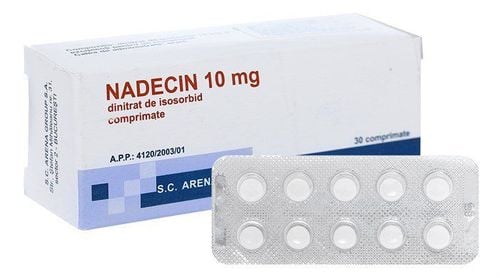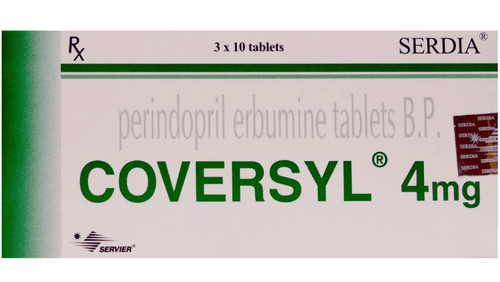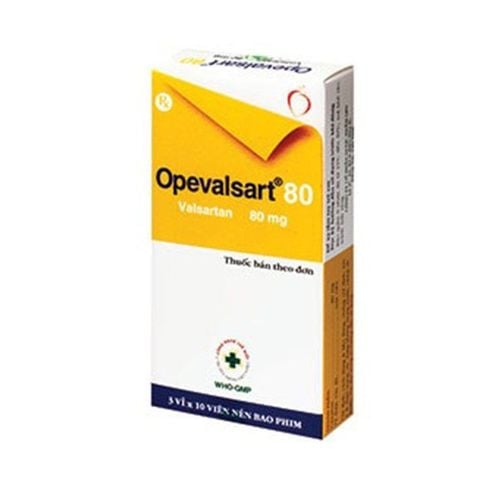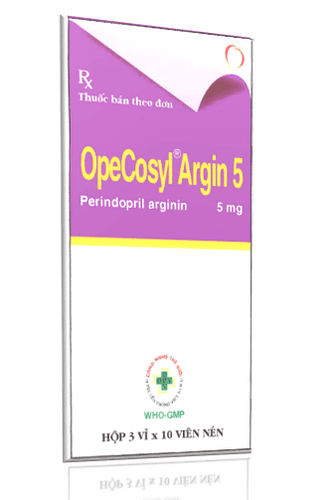This is an automatically translated article.
Nonanti drugs are indicated in the treatment of hypertension, can be used alone or in combination with other antihypertensive drugs. Adhering to the indications, the dose of Nonanti drug will help patients improve the effectiveness of treatment and avoid unwanted side effects.
1. What are the uses of Nonanti?
1.1. What is Nonanti? Nonanti belongs to a new class of antihypertensive drugs. Medicines with registration number: VN-17618-13. Produced by KMS Pharm Co., Ltd - KOREA, and registered by Wuhan Grand Pharm Goup Co., Ltd.
Prepared in the form of: Film-coated tablets; Packing: Box of 10 blisters, each blister of 10 tablets; box of 3 blisters of 10 tablets each; Nonanti drugs have the main active ingredient: Losartan potassium 50.0mg; Excipients: Microcrystalline Cellulose; Pregelatinized Starch; Crospovidone, Hydroxypropylcellulose; Magnesium Stearate; Hypromellose 2910; Titanium Oxide; Distilled Water and Carnauba Wax. 1.2. What does Nonanti do? Nonanti contains the main ingredient Losartan - the first of a new class of antihypertensive drugs, which is an angiotensin II (AT1) receptor antagonist.
Nonanti drugs have the following specific effects:
Used to treat hypertension: Can be used alone or in combination with other antihypertensive drugs such as: Thiazide diuretics. Nonanti should be used in patients who cannot tolerate ACE inhibitors. In addition, the drug Nonanti is also being used experimentally in the treatment of heart failure. This is a major advantage of angiotensin receptor antagonists, which can also be used to treat heart failure as indicated by ACE inhibitors. Nonanti drug is contraindicated in the following cases:
Patients with hypersensitivity to the ingredients and excipients in the drug. Women who are pregnant and breastfeeding. Children under 18 years old
2. Usage of the drug Nonanti
2.1. How to take Nonanti Drugs Nonanti should be taken orally. The patient should not break or crush the tablet when taking it.
2.2. Dosage of the drug Nonanti Use the starting dose and maintenance: From 25-50mg, once a day. If necessary, it can be increased to 100mg/day x 1 time. For the elderly (over 75 years old), people with renal impairment (moderate to severe) or people with reduced endothelial fluid: Initial dose of 25mg / day x 1 time. Handling missed dose:
In case of missing dose of Nonanti, it is advisable to supplement as soon as possible. However, if it is almost time for the next dose, skip the missed dose of Nonanti and use a new dose. Treatment of Overdose:
There are limited data on Nonanti overdose in human users. Manifestations of possible overdose are: hypotension, tachycardia and bradycardia. Patients need to stop taking Nonanti immediately and go to the nearest medical facility for timely treatment.
3. Note when using Nonanti
Special monitoring or dose reduction is required in patients who are dehydrated, treated with diuretics, and in whom other factors predispose to hypotension. Patients with bilateral / unilateral renal artery stenosis or those with only one kidney will also have a high risk of undesirable effects such as: Increase in creatinine and blood urea, which should be closely monitored during treatment. treat. Patients with liver failure should take a lower dose of Nonanti. The use of Nonanti drugs will act directly on the renin-angiotensin system during the second and third trimesters of pregnancy, so it may cause low amniotic fluid or hypotension, anuria, oliguria, craniofacial deformity. and infant mortality. Therefore, Nonanti should not be used for this subject. It is not known whether Nonanti is excreted in breast milk. However, because of the potential for harm to the nursing infant, a decision must be made whether to discontinue nursing while taking Nonanti or to discontinue Nonanti while breastfeeding.
4. Side effects of Nonanti
Most of the unwanted side effects of Nonanti drugs are mild and go away with time.
Common, ADR more than 1/100:
Cardiovascular: Hypotension. Central nervous system: Insomnia, dizziness. Endocrine and metabolic: Hyperkalemia. Digestion: Diarrhea and indigestion. Hematology: Mild decrease in hemoglobin and hematocrit. Neuromusculoskeletal: Back pain, leg pain, and muscle pain. Kidney: Lowers blood uric acid (when the patient takes high doses). Respiratory: Cough (less often with ACE inhibitors) or nasal congestion and sinusitis. Uncommon, 1/1000 less ADR less than 1/100:
Cardiovascular: Orthostatic hypotension, chest pain, palpitations, sinus bradycardia, tachycardia, facial edema and flushing. Central nervous system: Anxiety, ataxia, confusion, depression, migraine, headache, sleep disturbance, fever or dizziness. Skin: Hair loss, dermatitis, dry skin, erythema, photosensitivity, pruritus, urticaria, bruising and rash. Endocrine-metabolic: Gout. Gastrointestinal: Anorexia, constipation, flatulence, vomiting, loss of taste and gastritis. Genitourinary-urinary: Impotence and decreased sex drive, polyuria, nocturia. Liver: Slight increase in liver function tests and slight increase in bilirubin. Neuromusculoskeletal: Paresthesia, tremor, bone pain, muscle weakness, joint edema or fibromyalgia. Eyes: Blurred vision, conjunctivitis, decreased vision, burning and pain in the eyes. Ears: Tinnitus. Kidney: Urinary tract infection and slight elevation of creatinine or urea. Respiratory: Difficulty breathing, bronchitis, nosebleeds, rhinitis and airway congestion, throat discomfort. Other effects: Sweating. If you experience these symptoms, the patient should stop using Nonanti and notify the doctor for appropriate treatment.
5. Nonanti . drug interactions
Nonanti does not affect the pharmacokinetics of oral or intravenous digoxin. Co-administration of Nonanti with cimetidine increased the area under the curve (AUC) of losartan by approximately 18%, but did not affect the pharmacokinetics of the active metabolite of losartan. Co-administration of Nonanti with Phenobarbital resulted in an approximately 20% decrease in the AUC of the losartan component, and of the active metabolite. There is no pharmacokinetic interaction between Losartan and Hydrochlorothiazide Nonanti. To avoid interactions, before being prescribed Nonanti, patients should inform their doctors about all the drugs they are using, including functional foods. The doctor will base on that to prescribe the appropriate Nonanti.
6. How to store Nonanti
The shelf life of Nonanti drugs is 36 months from the date of manufacture. Store Nonanti medicine in a cool, dry place, the temperature does not exceed 30°C. Keep Nonanti out of the reach of children and household pets. Above is all information about Nonanti drug, patients need to carefully read the instructions for use, consult a doctor / pharmacist before using. Nonanti is a prescription drug, and patients should absolutely not self-treat at home because they may experience unwanted side effects.













